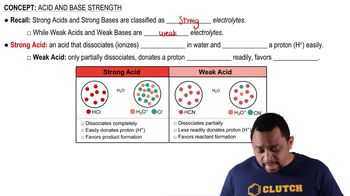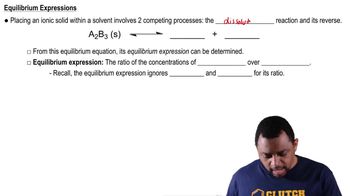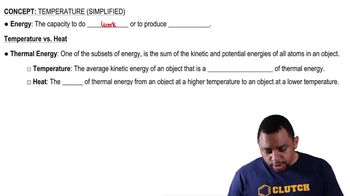Here are the essential concepts you must grasp in order to answer the question correctly.
Dissociation of Water
The dissociation of water refers to the process where water (H₂O) separates into hydronium ions (H₃O⁺) and hydroxide ions (OH⁻). This equilibrium is crucial for understanding acid-base chemistry and is influenced by temperature, as the concentrations of these ions change with thermal conditions.
Recommended video:
Acid and Base Strength Concept 1
Ion Product of Water (K_w)
The ion product of water, denoted as K_w, is the equilibrium constant for the dissociation of water. It is defined as the product of the concentrations of H₃O⁺ and OH⁻ ions in pure water. K_w varies with temperature, and its value at 25 °C is 1.0 x 10⁻¹⁴, serving as a reference point for calculating ion concentrations at different temperatures.
Recommended video:
Solubility Product Constant (Ksp) Concept 2
Temperature Dependence of K_w
K_w is temperature-dependent, meaning its value changes with temperature variations. As temperature increases, the dissociation of water becomes more favorable, leading to higher concentrations of H₃O⁺ and OH⁻ ions, thus increasing K_w. Understanding this relationship is essential for calculating K_w at different temperatures, such as 0 °C and 50 °C.
Recommended video:
Temperature (Simplified) Concept 1
 Verified step by step guidance
Verified step by step guidance Verified video answer for a similar problem:
Verified video answer for a similar problem:



 2:22m
2:22m